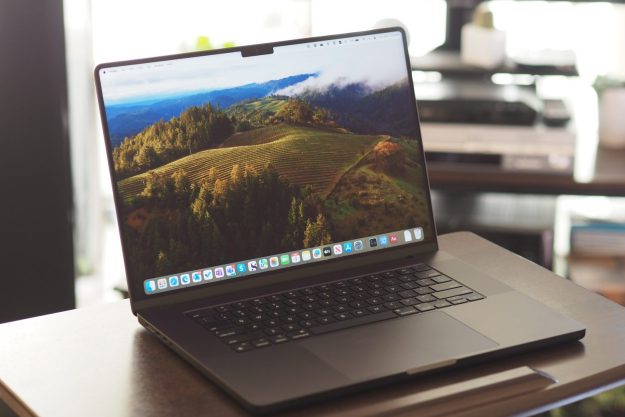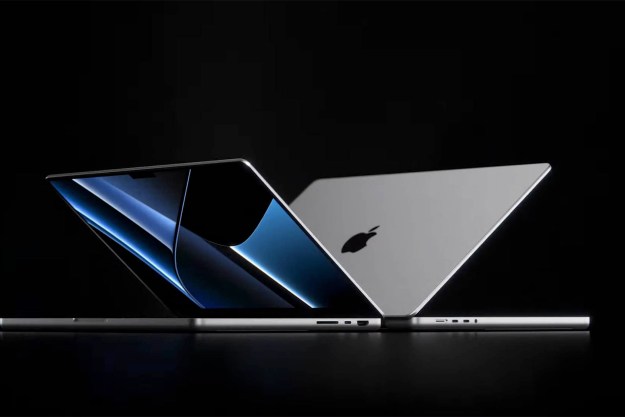
Speculation and rumor has been building for months that Apple would be launching new desktop systems…and today the news has dropped, and Apple updating both it’s consumer-oriented Mac mini and iMac desktop systems, along with its Xeon processor-equipped Mac Pros aimed at high-end computing and media production professionals.
The diminutive Mac minis have received a significant update, now sporting 2 GHz Intel Core 2 Duo CPUs and support for up to 4 GB of RAM, up to 320 GB of hard drive storage, a 1066 MHz system bus, and Nvidia GeFore 9400M graphics—plus a SuperDrive. Unexpectedly, the Mac mini now sports 5 USB 2.0 ports and a FireWire 800 port—also unexpected, the Mac mini boasts two video output sofr driving two monitors with Mini DisplayPort or DVI connections. Of course, the minis still sport 802.11a/b/g/n Wi-Fi and Bluetooth wireless networking, gigabit Ethernet. Prices start at $599…although, of course, build-to-order options and higher-end configurations cost more. The new Mac minis are available now.
Apple’s new iMacs come with either 20- or 24-inch LCD displays—the 20-incher sports a native 1,680 by 1,050 pixel resolution, while the 24-inch model pushes out to 1,920 by 1,200 pixels. The iMacs sport Intel Core 2 Duo processors running from 2.66 to 3.06 GHz with Nvidia GeForce 9400M graphics on the 20-inch and lower-end 24-inch model, with the higher-end 24-inch models kicking up to Nvidia GeForce GT 120 and GT130 graphics with 256 MB and 512 MB of dedicated video memory, respectively. The systems ship with 320 GB to 1 TB of hard drive storage and a base 2 GB of RAM, and sport 4 USB 2.0 ports and one FireWire 800 port. Also on board: 802.11a/b/g/n Wi-Fi and Bluetooth wireless networking, gigabit Ethernet, and an integrated iSight Web cam. The systems ship with an Apple keyboard and wireless mouse, plus an Apple Remote and an IR receiver for driving media from across the room. Users who need more screen real estate can hook up another monitor via a Mini DisplayPort output. Prices on the new iMacs start at $1,199 for the 20-inch model and scale up to $2,199 for the 3 GHz 24-inch model—although build-to-order options of course raise the price. The new iMacs are available now.
Finally, at the high end, Apple is introducing new Mac Pro towers featuring “Nehalem” Xeon processors and a new system architecture that Apple claims offers up to twice the performance of previous Mac Pro models—and their pricing starts off a bit lower than the previous generation of Mac Pros. The systems sport either one or two quad-core Intel Xeon 5500 processors (meaning four to eight processor cores, in total), with 8 MB of shared L3 cache and an integrated memory controller with three channels of 1066 MHz DDR3 ECC memory. In theory, the new memory architecture offers up to 2.4 times the bandwidth of previous systems with lower latency. The systems ship standard with Nvidia GeForce GT 120 graphics with 512 MB of video memory, although and ATI Radeon HD 4870 is available for higher graphics performance. The Mac Pros, of course, offer tons of interior room for expansion and support up to 4 TB of internal storage using 1 TB SATA drives, and a cable-free Mac Pro RAID card is available. The systems offer four PCI Express 2.0 slots (three are open), five USB 2.0 ports, four FireWire 800 ports, Bluetooth wireless networking (Wi-Fi is available as an option), an 18× SuperDrive, and 3 to 6 GB of RAM standard (on the quad and eight-core models, respectively—with 32 GB of RAM available as an option on the eight-core model). The new Mac Pros should start next week at prices starting at $2,499 for the quad-core model and $3,299 for the eight-core version.
Overall, Apple’s new offerings don’t shift the company’s price points very much, but do offer respectable upgrades across their product lines. Of particular note is the new consumer-friendly Mac mini, which will suddenly appeal to a broader range of experienced and professional users with dual display support and FireWire 800 connectivity—for folks who already have displays and peripherals, the new Mac mini might be all the computer they need.
Editors' Recommendations
- The 6 key things Apple must fix in the next version of macOS
- Best Mac Mini deals: Save over $100 on an Apple desktop
- iMac deals: New, renewed and refurbished iMac computers
- Best Apple deals: Save on AirPods, Apple Watch, iPad, MacBook
- Hurry! This iMac is at its cheapest ever price right now


